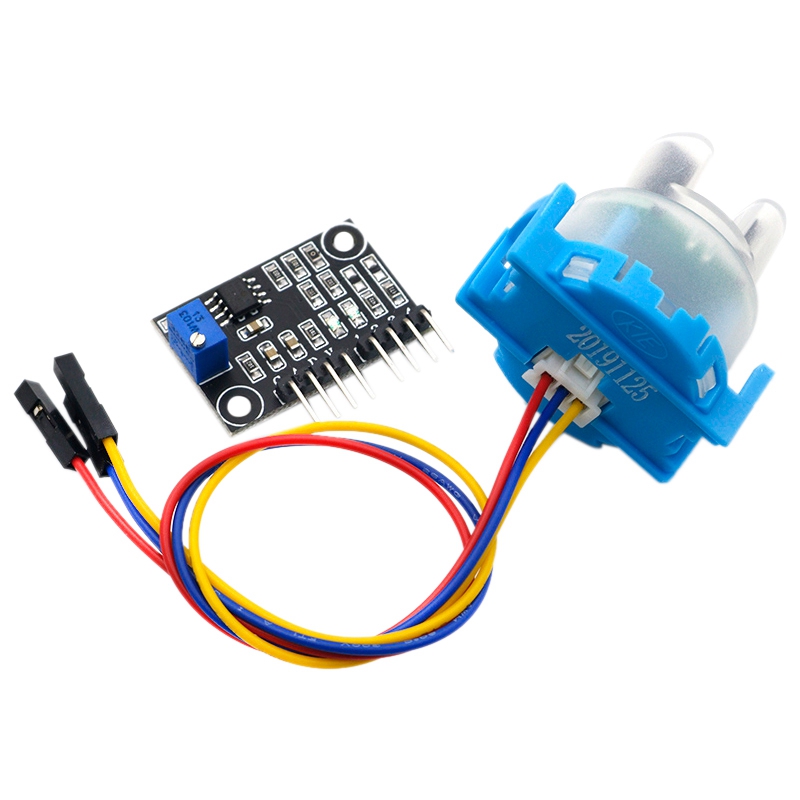Turbidity sensors can be found in both digital and analog variants, offering different advantages and applications depending on the specific requirements. To understand the difference between digital and analog turbidity sensors, it’s important to grasp the underlying principles and technologies involved.
Turbidity refers to the cloudiness or haziness of a fluid caused by the presence of suspended particles or solids. Turbidity sensors are designed to measure this optical property and provide a quantitative or qualitative assessment of the suspended solids concentration within a liquid sample.
- Analog Turbidity Sensors: Analog turbidity sensors generate an analog output signal that varies in proportion to the turbidity level of the measured sample. These sensors often utilize optical techniques, such as light scattering or absorption, to estimate turbidity. The analog output signal is typically a continuous voltage or current signal that can be directly proportional to the turbidity level.
Advantages of Analog Turbidity Sensors: a) Real-time monitoring: Analog sensors provide continuous and real-time turbidity measurements, allowing for immediate response to changes in the sample. b) Smooth signal transition: Analog signals offer a smooth transition between turbidity levels, enabling the detection of subtle changes in turbidity. c) Compatibility: Analog output signals can be easily interfaced with analog-to-digital converters (ADCs) or other analog processing equipment.
Disadvantages of Analog Turbidity Sensors: a) Signal degradation: Analog signals are susceptible to noise and signal degradation over long transmission distances or in noisy environments, potentially impacting the accuracy of turbidity measurements. b) Limited resolution: Analog sensors may have limitations in terms of resolution, making them less suitable for applications that require precise and fine-grained turbidity measurements. c) Calibration requirements: Analog sensors often require periodic calibration to ensure accurate and reliable measurements, as analog signals may drift over time.
- Digital Turbidity Sensors: Digital turbidity sensors convert the turbidity measurement into a digital format, typically utilizing an internal analog-to-digital converter (ADC) to digitize the sensor output. The digital output can be in various formats, such as serial communication protocols (e.g., I2C or UART) or digital output pins (e.g., digital high or low).
Advantages of Digital Turbidity Sensors: a) Precise measurements: Digital sensors can provide higher resolution and precision in turbidity measurements compared to analog sensors, as they are not limited by analog signal constraints. b) Noise immunity: Digital signals are less prone to noise interference during transmission or in noisy environments, ensuring more reliable and accurate turbidity readings. c) Ease of integration: Digital output can be easily interfaced with microcontrollers, computers, or other digital devices, simplifying system integration and data processing.
Disadvantages of Digital Turbidity Sensors: a) Sample rate limitations: Some digital turbidity sensors may have limitations on their sample rate or response time, affecting their suitability for applications requiring rapid and dynamic turbidity measurements. b) Non-linear response: Some digital sensors may exhibit non-linear response characteristics, requiring additional calibration or compensation techniques to obtain accurate turbidity readings. c) Increased complexity: The digital interface and associated circuitry may introduce additional complexity compared to analog sensors, potentially requiring more advanced system integration and programming knowledge.
Ultimately, the choice between digital and analog turbidity sensors depends on the specific requirements of the application. Analog sensors are well-suited for real-time monitoring and applications where a continuous, smooth transition of turbidity levels is desirable. Digital sensors, on the other hand, offer advantages in terms of precision, noise immunity, and ease of integration with digital systems. Considerations such as the required resolution, response time, noise levels, and system compatibility will guide the selection of the most appropriate turbidity sensor type for a given application.
